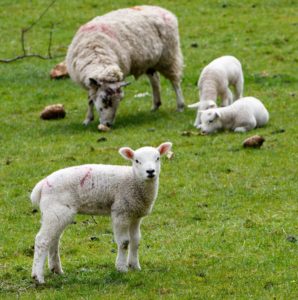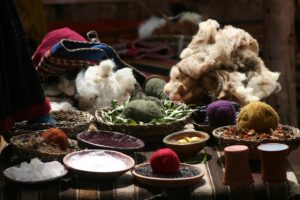 We are starting our value added marketing series with sheep. Sheep and wool are an agricultural product dating back to early biblical times. In fact one of my favorite bible verses is
We are starting our value added marketing series with sheep. Sheep and wool are an agricultural product dating back to early biblical times. In fact one of my favorite bible verses is
Proverbs 31:13 She looks for wool and flax And works with her hands in delight.
Sheep come in many different flavors a friend of mine used to say. There are over one thousand sheep breeds worldwide. You must first know what your goals are then you can pick your sheep breed. For instance if you are breeding the sheep for primarily meat you would want a very different type of sheep than if you were wanting to sell fine micron fleeces as your primary marketing goal.
There are basically three types of sheep because generally there are only three harvestable products on a sheep, wool types, meat types and milk types. There are a few breeds that fall into two categories like Columbia, which if selected carefully can have large carcasses but fine wool.
Meat sheep are selected and bred for large meaty hind quarters and overall body muscling. One of the prominent breeds for meat are Suffolks. They are a black open faced (no wool on face) Sheep that has a very meaty carcass and a medium wool micron 25- 33. The lambs grow very fast and are marketable earlier than many other breeds. This is very good if you have limited pasture or feed. The dorper sheep has become quite a popular meat sheep in the US in the last few years.
Meat sheep like, Hampshires, Suffolks, Border Listers, Targhee, and Corridale, commonly found in the US have courser fiber. These sheep produce a lighter fleece than fine wool sheep but there are more pounds of meat on them. Generally speaking the wool from these breeds is more suited to rug wool, or weaving and is too scratchy for garment wool. The price of the wool from these breeds would also be lower because of the micron.
Meat breeds like Dorper, Wiltshire Horn, Katadin, Barbados, American Blackbelly are considered hair sheep and have no shearable fleece but instead shed in the spring. They have a guard hair and short fiber that will just fall off. If you don’t want the hassle of shearing in the spring but would like to raise meat these might be the breeds for you.
 If you are breeding for wool you will need to understand both the American, English and micron classifications. You will also need to understand what makes a valuable fleece and how to care for your sheep to maintain a highly desirable fleece condition.
If you are breeding for wool you will need to understand both the American, English and micron classifications. You will also need to understand what makes a valuable fleece and how to care for your sheep to maintain a highly desirable fleece condition.
Before I list some breeds, remember the wool grade is individually assessed, just because you have Merino sheep, depending on their diet, age and other factors their wool could be assessed as medium instead of fine. A southdown due to breeding and selection may have fine fiber even though it is not really classed in the fine fiber breeds. I have placed them in a chart but remember individual animals from one class to another.
This PDF from Montana State University has a great chart check it out here.
The most prized fiber sheep is the merino. The fleeces can be from 10 – 22 micron and it is a very fine garment fiber and desired worldwide. However the Rambouillet is the American standard of fine wooled sheep. Other fine wooled sheep in the US are Columbia, American Cormo, Merino, Debouillet, Panama and some cross breeds.
The milk breeds of sheep are East Friesian and Lacaune in the US. Sheep milk is very high in Protein and Fat. Most of the sheep milk imported and used in the US is in the form of cheese. Feta, Ricotta and other soft cheeses can be made with sheep milk, and yogurt and Ice Cream as well are popular ways to use sheep milk. Sheep have been milked since biblical times and this is a great way to value add to your sheep program.
So be sure to do a bit of research and choose the right breed of sheep for your farm. It is easy to see a cute lamb and buy it but if you are planning on knitting a sweater from the wool …you will want to wear Merino rather than Suffolk.
